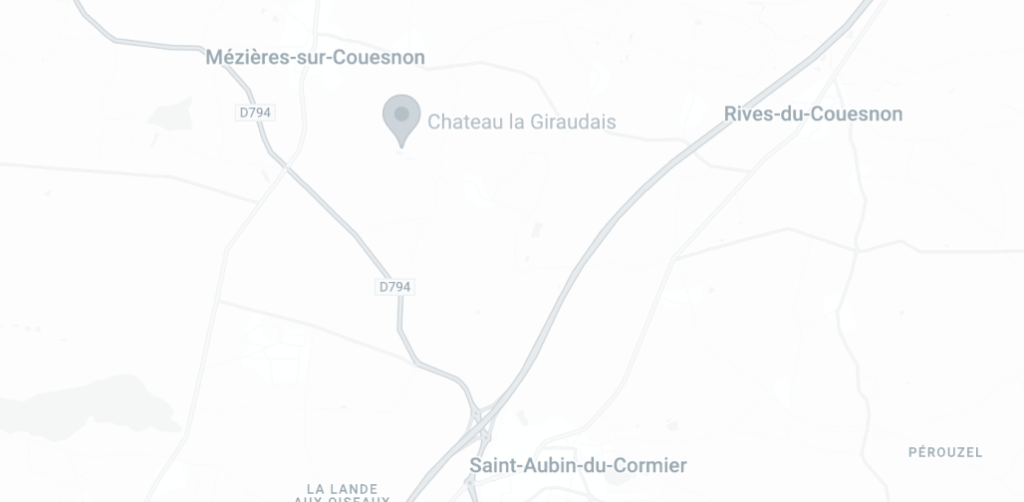
The History of the Château
de Saint-Aubin-du-Cormier
The Château de Saint-Aubin-du-Cormier was built by Duke Pierre de Dreux to protect the eastern border, particularly the city of Rennes, while also keeping an eye on two important vassals, the turbulent barons of Fougères and Vitré. It was to become one of the key pieces in the fortified defensive line of Brittany, stretching from Saint-Malo to Nantes. The Duke was particularly fond of this wild, forested site, rich in game. From the start of his reign, he dreamed of building a castle there and called upon the best craftsmen and companions to build it. Construction began in 1223 and was completed in 1225, with the main structure finished in just two years. Over time, the fortifications were expanded and improved, making it an impregnable fortress—at least until the advent of the powerful steel cannonballs of the 15th century!
A walled town was also established alongside the castle by Pierre de Dreux to facilitate settlement. To encourage its growth, the Duke granted exceptional privileges to the new inhabitants. By an act dated April 17, 1225, he freed all inhabitants of Saint-Aubin-du-Cormier from the numerous feudal duties, including taxes, and granted them rights to pasture, firewood, and litter. The only remaining obligation was military service when required, and an annual rent of five sous per house. Another clause ensured that the people of Saint-Aubin-du-Cormier maintained their freedoms even if they left the town, as long as they stayed on the Duke’s lands. Thanks to these privileges, the town flourished and became a lively market while still serving its primary function as a fortified stronghold for the Duchy.
In 1230, Pierre de Dreux, also known as Mauclerc, withdrew from allegiance to the French King and paid homage to King Henry III of England. This led to a French invasion of Brittany, spearheaded by the young King Louis IX, with the aim of capturing the city and fortress of Saint-Aubin-du-Cormier, underlining the strategic importance of the site. The Duke of Brittany, too weak to directly attack the French, targeted their rear guard, where the supply convoys were stationed, destroying the siege equipment. Despite this, the French army advanced and laid siege to the town. Mauclerc, unable to resist, was forced to negotiate a truce on July 4, 1231, and entrusted his valuable citadel to the French lord Philippe Hurepel, Count of Boulogne, the king’s uncle. He was only able to reclaim the fortress after Hurepel’s death in January 1234, well before the truce expired. In 1342, the château, defended by Papillon de Saint-Gilles, withstood a siege by Charles de Blois, although the town was burned. By 1381, it was in the hands of Olivier de Clisson, who handed it over to Duke Jean IV. Duke Jean V confirmed the town’s privileges in 1427 and carried out major renovations in 1435, including the construction of an interior chapel and fortifications. Further work was done by François II just before the French invasion of 1487, which successfully progressed to Nantes, where the city resisted.
On October 10, 1487, a French army of 4,000 men, led by Charles VIII, laid siege to the Château de Saint-Aubin-du-Cormier, spreading terror wherever they went. Many of the town’s inhabitants fled into the nearby forest, as did about twenty Breton soldiers from the castle, leaving only forty men under the command of the brave old Rosnyvinen. Determined to defend the castle to the death, Rosnyvinen and his men killed between 60 and 80 French soldiers before the intense cannon fire broke through the castle walls on the town side. The French were able to take the fortress, but in respect for Rosnyvinen’s valor, they allowed him to retreat to Rennes, saving his life and rings. Although initially unwilling to leave, Rosnyvinen eventually agreed under pressure from his men. Thus, Saint-Aubin-du-Cormier fell permanently into French hands. The castle was demolished the following year after the Battle of Saint-Aubin-du-Cormier in May 1489, on the orders of King Charles VIII. A half-destroyed keep was left standing on the northeastern side, marking the French domination over the Bretons. Some mischievous Breton spirits wonder if the French may have left us a shield. From 1225 to 1489, the castle existed in its glory for only 262 years, but its beautiful ruins still stand more than half a millennium later, telling us its story and evoking its former grandeur. The powerful legacy of stones…








